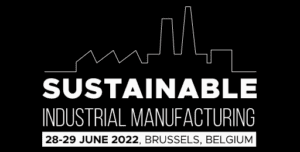Accelerate Manufacturing Sustainability With Connected Worker Technology
A version of this article was originally published in Efficient Plant.
Technology is often used to drive efficiency and productivity to support increased growth and profitability. The technology itself, however, is seldom viewed as a means to achieve better sustainability performance.
Digital technology can be used to accelerate social and environmental improvement while driving our capital system toward profitability. Tech leaders in all sectors should think about how to build and use technology to increase profit margins and shape productivity for good. This is not a linear mindset. Profitability and efficiency can be achieved in parallel by reducing waste/carbon footprint and creating a safer workplace. Going forward, financial success and sustainability should go hand in hand within the tech sector.
Digital tools and, specifically, connected worker technology – which connects frontline industrial workers to information, people, systems, and assets to help them work more efficiently and safely – can increase business growth and operational productivity while facilitating sustainability.
The pandemic has demonstrated to us that we can use various technologies to connect individuals in a workforce. Rapid adoption and integration of these technologies has enabled instantaneous global connection, virtual review and execution of documents, touchless food- and medical-supply delivery, and immediate real-time data delivery to and from global sites. These technology-use cases have increased corporate margins and reduced bottom-line expenses while simultaneously reducing waste and carbon footprints.
What is most compelling about digital tools is that you can concurrently drive productivity and enhance sustainability. Sustainability is a C-suite objective that is increasingly of equal stature to revenue and profit.
One example is the use of connected worker software by a paper and packaging company to solve a high-value waste-management problem. Historically, this company was producing an unnecessarily large volume of corrugated paperboard waste, in part because of a culture that lacked procedural visibility and accountability for executed work on the frontlines. While the digital solution was driven primarily by a need to realize financial benefits, an additional outcome was that raw materials were used in a more sustainable manner because of heightened worker awareness and more conscientious production/consumption practices.
Consequently, the use of digital tools by this company was a prime factor in effecting a frontline cultural change in how operators viewed and implemented waste-management practices. As a result, all waste became routinely scanned, tagged, measured, and, where possible, photographed – a vivid example of the management mantra of “you can only improve what you measure.”
Over an initial three months, the use of various digital tools and connected worker technology helped reduce waste by 10%, eventually resulting in significant financial savings over the course of the year.
This trend has continued, and the company went from being the highest producer of waste in its country of operation to “best performing” in two years.
By identifying and analyzing patterns that increase efficiency, less waste is generated, and energy consumption is reduced over time. Without the real-time data that connected worker technology provides, it would be more difficult to discern patterns and implement the changes that improve sustainability.
One of the many benefits of connected worker technology is that it can help you achieve your sustainability goals, without compromising productivity or profits.
Digital transformation of the factory floor and manufacturing workforce drives bottom-line improvement by providing access to real-time information, thus improving quality, reducing environmental impact, improving safety-incident response times, and facilitating collaboration between individuals and functions. The resulting co-benefit is advanced sustainability performance.






